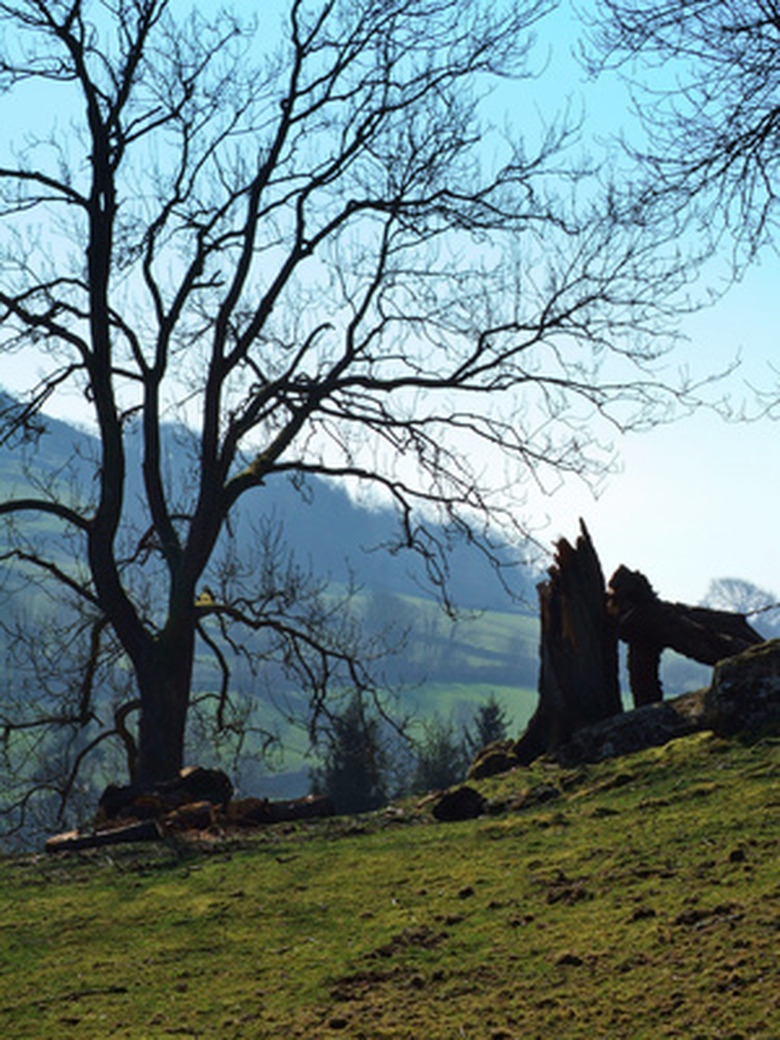Black Tree Fungus
Fungal infections can develop into serious diseases in plants. Trees are no exception. Black fungus that appears on trees can cause aesthetic damage to the foliage of a tree, ruin fruit production and in extreme cases cause the death of a tree.
Types
Black colored fungus on trees comes in many varieties and can cause mild to serious damage to the plant. Fungus can attack anywhere on the tree, from the foliage all the way down to the root system of the tree.
Black Sooty Mold
Black fungus that appears as a powdery mold on the foliage of the tree is one of the minor black fungi that attack trees. Powdery black mildew grows on the excretions of insects feeding on the tree. This fungal infection is affects many trees, including the common ash and oak. Permanent damage to the tree takes several years, meaning the problem can be cleaned up over time. Managing the insects that create the syrupy excretions that make the fungi possible will remove the problem.
- Fungal infections can develop into serious diseases in plants.
- Black fungus that appears as a powdery mold on the foliage of the tree is one of the minor black fungi that attack trees.
Kretzschmaria deusta
Kretzschmaria deusta is a black fungi that appears on most broadleaved or coniferous trees, such as Oak, Lime and Maple. This black fungi is parasitic and is usually found close to the ground, near the roots and on old tree stumps. The fungus will create fruiting bodies as it grows, usually appearing as a whitish gray flat layer on the tree, maturing into black lumps. Kretzschmaria deusta is particularly deadly to trees as it can decompose wood quite quickly. There are no fungicide controls for this infection.
Black Knot
Black knot is a serious fungal infection that afflicts plum, prune and cherry trees in the northeastern United States. The disease is caused by a fungal infection, which over time creates areas of swelling, creating black knots. Knots appear at nodes, where branches form on the tree. This causes the tree to bloom improperly and lose foliage.
- Kretzschmaria deusta is a black fungi that appears on most broadleaved or coniferous trees, such as Oak, Lime and Maple.
- The disease is caused by a fungal infection, which over time creates areas of swelling, creating black knots.
Control
Preventing infections of black fungus is the most important control measure. Trees should never be planted in areas where there is a severe fungal infection of other trees. Fungal spores travel through the air making infection of trees in the surrounding area possible. When fungal infections occur, some black fungus can be controlled using fungicides, sprayed in the early spring, and in the fall before winter. Trimming infected portions of the tree to remove black fungus infection can also help control spreading.
